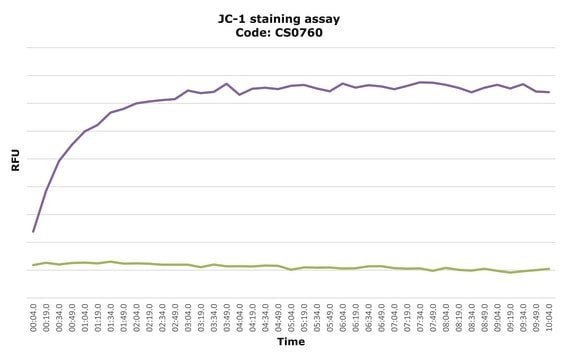MAK360
Mitochondrial Complex III Activity Assay Kit
sufficient for 100 colorimetric tests
Sign Into View Organizational & Contract Pricing
All Photos(4)
About This Item
UNSPSC Code:
12161503
NACRES:
NA.84
Recommended Products
usage
sufficient for 100 colorimetric tests
detection method
colorimetric
storage temp.
−20°C
General description
Mitochondrial Complex III or Ubiquinol-Cytochrome c reductase is the third complex of the Electron Transport Chain located in the mitochondrial membrane. It is present in the mitochondria of all aerobic eukaryotes as well as in the inner membranes of most bacteria. It transfers electrons from CoQH (reduced coenzyme Q or ubiquinol) to cytochrome c, resulting in the reduction of cytochrome c. This reduced cytochrome c is a substrate for complex IV of the electron transport chain.
Suitability
Suitable for the measurement of Mitochondrial Complex III activity in isolated mitochondria.
Principle
The Mitochondrial Complex III Activity Assay is based on the reduction of cytochrome c through the activity of Complex III. The absorbance of reduced cytochrome c can be measured at A550 nm. It is a fast and reliable method to determine the activity of complex III in isolated mitochondria. The kit can detect as low as 10 mU/mL and is linear up to 30 mU/mL.
Storage Class Code
10 - Combustible liquids
Flash Point(F)
188.6 °F
Flash Point(C)
87 °C
Certificates of Analysis (COA)
Search for Certificates of Analysis (COA) by entering the products Lot/Batch Number. Lot and Batch Numbers can be found on a product’s label following the words ‘Lot’ or ‘Batch’.
Already Own This Product?
Find documentation for the products that you have recently purchased in the Document Library.
DJ-1 attenuates the glycation of mitochondrial complex I and complex III in the post-ischemic heart.
Yvanna Pantner et al.
Scientific reports, 11(1), 19408-19408 (2021-10-02)
DJ-1 is a ubiquitously expressed protein that protects cells from stress through its conversion into an active protease. Recent work found that the active form of DJ-1 was induced in the ischemic heart as an endogenous mechanism to attenuate glycative
Ahmed Ismaeel et al.
Nutrients, 14(5) (2022-03-11)
Previous studies have shown that chronic heavy alcohol consumption and consumption of a high-fat (HF) diet can independently contribute to skeletal muscle oxidative stress and mitochondrial dysfunction, yet the concurrent effect of these risk factors remains unclear. We aimed to
Lucie Aumailley et al.
Redox biology, 57, 102491-102491 (2022-10-01)
Ascorbate is a crucial antioxidant and essential cofactor of biosynthetic and regulatory enzymes. Unlike humans, mice can synthesize ascorbate thanks to the key enzyme gulonolactone oxidase (Gulo). In the present study, we used the Gulo-/- mouse model, which cannot synthesize
Our team of scientists has experience in all areas of research including Life Science, Material Science, Chemical Synthesis, Chromatography, Analytical and many others.
Contact Technical Service





